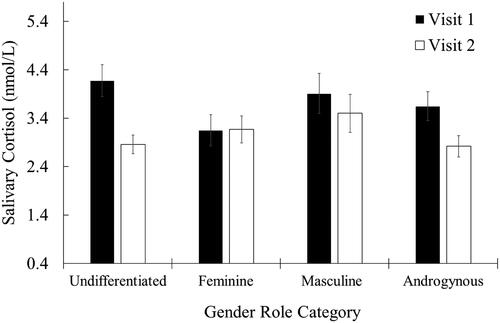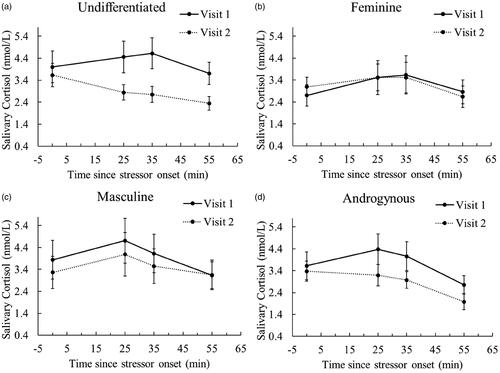Figures & data
Table 1. Descriptive statistics and between-gender role category contrasts of demographic measures and study condition assignment.
Figure 1. Salivary cortisol as a function of study visit and gender role category. Undifferentiated individuals scored below the median on both masculinity and femininity; feminine individuals scored above the median on femininity and below the median on masculinity; masculine individuals scored above the median on masculinity and below the median on femininity; androgynous individuals scored above the median on both masculinity and femininity. Data shown are unadjusted marginal means estimates of salivary cortisol. Error bars shown correspond to standard errors of mean estimates.

Figure 2. Salivary cortisol as a function of time since stressor onset, laboratory visit, and gender role category. Undifferentiated individuals (panel a) scored below the median on both masculinity and femininity; feminine individuals (panel b) scored above the median on femininity and below the median on masculinity; masculine individuals (panel c) scored above the median on masculinity and below the median on femininity; androgynous individuals (panel d) scored above the median on both masculinity and femininity. Data shown are unadjusted marginal means estimates of salivary cortisol. Error bars shown correspond to standard errors of mean estimates.

